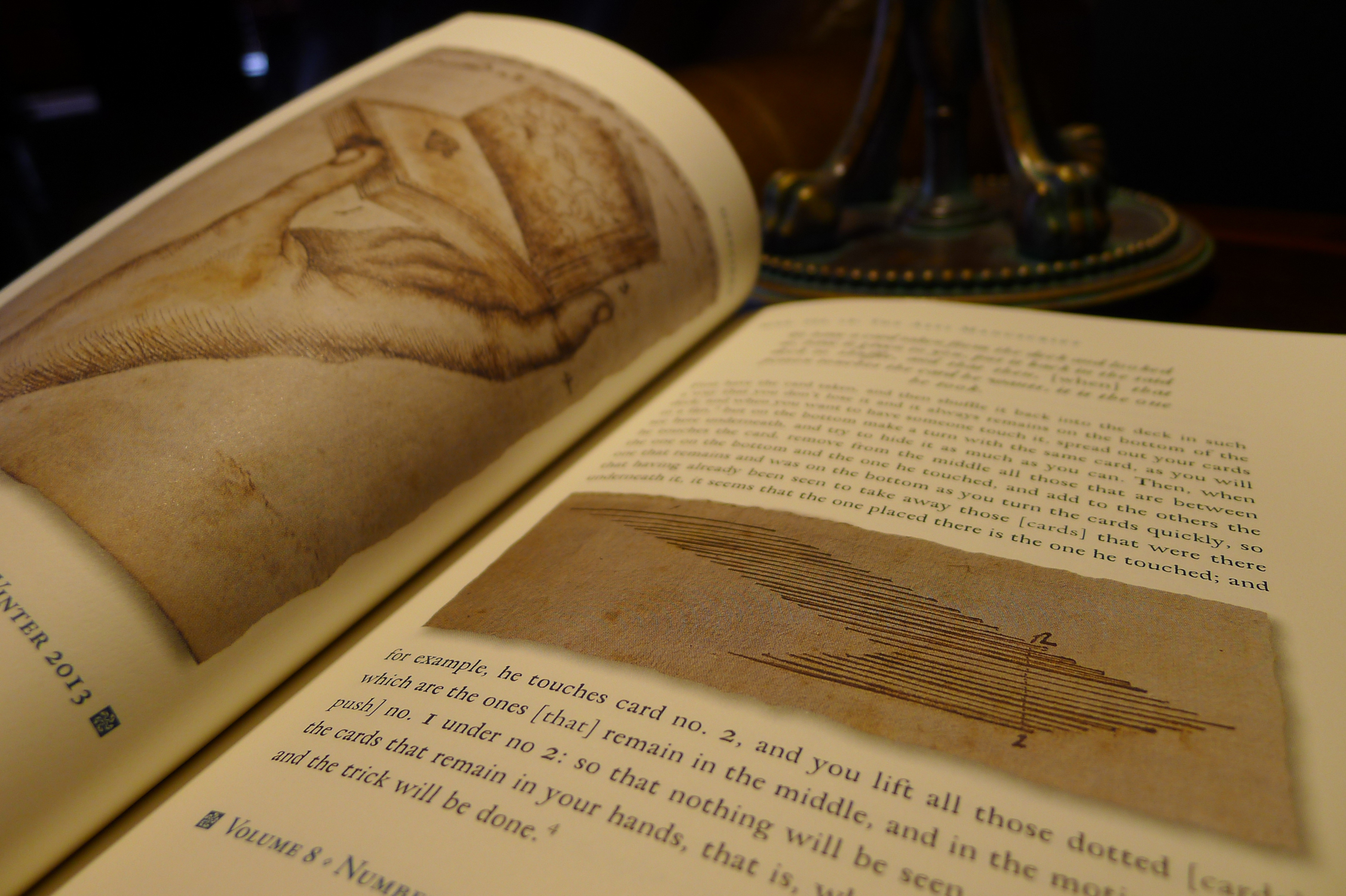Il Manoscritto d’Asti su Gibecière
Sul sito di Mariano Tomatis si parla del famoso Manoscritto d’Asti.
È uscito il volume 8 numero 1 della rivista Gibecière, dove è trascritto l’intero “Manoscritto di Asti” – un poderoso trattato di illusionismo della fine del Seicento.
Individuato nella Biblioteca di Asti da Marco Aimone e analizzato in profondità da Aurelio Paviato, è composto da 326 pagine e contiene – tra l’altro – svariati effetti di mentalismo.
Sfrutta una “carta chiave” l’effetto “Indovinare quale carta sia stata pensata” (p. 59).
L’effetto “Far pensare a 6 persone una carta ciascuno e indovinarle tutte” (p. 62) si basa sulla stessa matrice matematica che fa funzionare il Gratioso pensiero di Pietro Millioni (1649). Sulla matrice si basa anche l’effetto “Un modo di far pensare una carta e indovinare quale sia” (p. 65).
L’effetto “Indovinare la carta pensata da qualcuno” (p. 69) è la classica versione del gioco delle 21 carte. La nota tecnica matematica dell’orologio è alla base dell’effetto “Indovinare quale ora si stia pensando” (p. 73).
Leggi tutto su http://www.marianotomatis.it/mental/index.php?post=blog/20130405

Ecco l’articolo citato da Mariano sul sito Conjuring Arts Research Center.
It’s kind of a big deal.
Our 15th issue of Gibecière is our biggest issue ever! As with some previous issues of our journal, we are once again very proud to deliver a long lost manuscript that sheds refreshing light on our history while also unearthing some forgotten treasures.
The Asti manuscript is estimated to have been written somewhere between 1670 – 1730 and, until recently, had been relegated to a storage closet housing a miscellany of things in the Biblioteca di Asti. Someone did discover the manuscript there and deemed it worth being inventoried and catalogued, although they ultimately decided it was not of any major importance.
It was Marco Aimone and Aurelio Paviato who learned of the manuscript and thought otherwise. Just a brief look at the first two items, and they knew they had found a new and important addition to magic literature. Here we find the earliest known descriptions of a sleight-of-hand color change and the under-the-spread force. In addition, there are unique effects described that would otherwise have been lost, as well as early precursors to now-classic effects. The forgotten effects may inspire you to breathe new life into them with modern methods, while the early handlings of classic effects could drive a well-worn plot in new directions.
The manuscript has been painstakingly transcribed by Aurelio Paviato and then translated into English by Lori Pieper and features sections on tricks with playing cards, sleight of hand with other objects and tricks with apparatus, and, finally, tricks, stunts, and experiments. The author has included a plethora of clear and very informative illustrations. Additionally there are a number of tips on handling sprinkled throughout the manuscript that point to some early psychological advantages in use by magicians of the era.
The manuscript has been made as readable as possible and supplemented with numerous annotations by Lori Pieper, Aurelio Paviato, Thierry Depaulis, William Kalush, and Stephen Minch. Further, studies of the history and background for the work have been provided by Donatella Gnetti and Thierry Depaulis.
Leggi tutto su http://conjuringarts.org/2013/03/gibeciere-vol-8-no-1/




Alberto Bassino liked this on Facebook.
Pingback: Nambernain, 9° Congresso Magico di Asti, 29 Novembre – 1 Dicembre 2013 | Prestigiazione.it